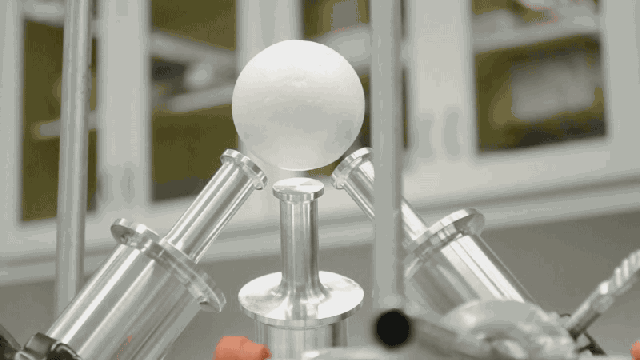Using sound frequencies above the human threshold for hearing, scientists have successfully levitated a 5cm sphere made from polystyrene.
In a new study published in Applied Physics Letters, a team of international scientists has shown that it’s possible to acoustically levitate an object that’s larger than the acoustic wavelength itself. In their experiment, the researchers levitated a 50mm polystyrene ball at a height of 7mm, which is about half the wavelength of the acoustic waves.

Image: Andrade et al., 2016
Researchers from the University of São Paulo in Brazil and Heriot-Watt University in Edinburgh, UK, accomplished the feat by producing a standing wave in the space between the sphere and a tripod equipped with acoustic transducers (a device that converts electric signals into ultrasonic waves). A standing wave, like the vibration of a guitar string, has peaks and valleys that stay fixed in the same position. In this orientation, the acoustic effect caused the ball to float in mid-air.
Previously, scientists were able to achieve a similar effect for a few specific cases, such as flat and wiry objects. Here, the researchers were able to levitate a sphere that’s 3.6-times larger than the 14mm wavelength used in the experiment. To make it work, the scientists combined multiple ultrasonic transducers, allowing them to increase the maximum object size from one quarter of the wavelength to two inches.
This work suggests that it might be possible to levitate even larger spheres, as well as objects of different shapes and sizes, and at different positions. “At the moment, we can only levitate the object at a fixed position in space,” Marco Andrade said in a statement Phys.org. “In future work, we would like to develop new devices capable of levitating and manipulating large objects in air.”
Eventually, this levitation technique could be used to handle and manipulate all sorts of materials, including very hot materials and liquid samples. It could even be used in space to control liquid samples. But until we get to that point, we can simply enjoy this very cool experiment.
